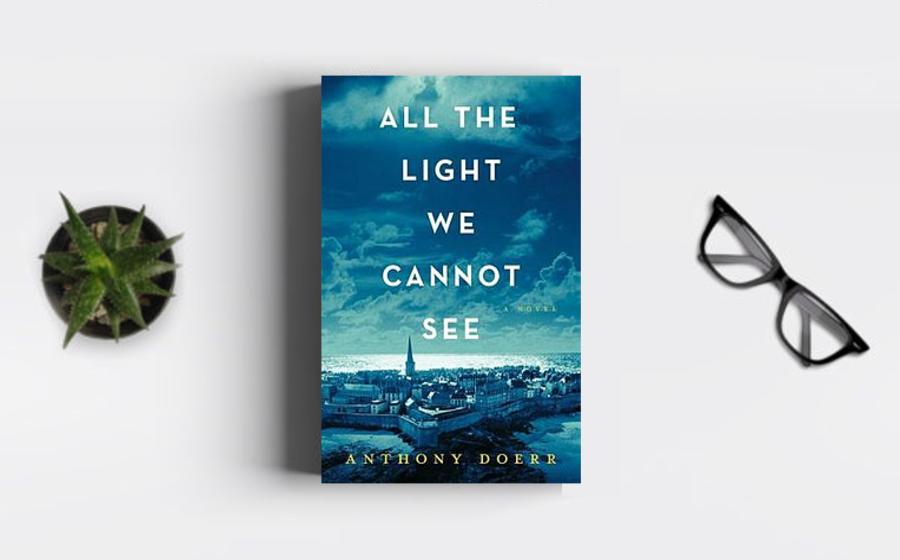"All the Light We Cannot See," published in 2014, has
earned its place as a contemporary classic, captivating
readers with its exquisite prose, intricate narrative,
and profound exploration of the human spirit in the face
of war. Set against the backdrop of World War II, this
Pulitzer Prize-winning novel intricately weaves together
the lives of a blind French girl, Marie-Laure LeBlanc,
and a German orphan, Werner Pfennig, illuminating the
unseen threads that connect their fates. As we delve
into the reasons behind its universal acclaim and
enduring significance, it becomes clear that "All the
Light We Cannot See" is a modern masterpiece that
transcends its historical setting, offering a timeless
exploration of love, survival, and the indomitable
nature of the human soul.
At the heart of the
novel is the lyrical and evocative prose that has become
synonymous with Doerr's storytelling. Each sentence is
meticulously crafted, akin to a brushstroke on a canvas,
painting a vivid and poignant portrait of wartime
Europe. Doerr's descriptive language not only captures
the physical landscapes of Saint-Malo and other settings
but also delves into the emotional landscapes of the
characters, creating a narrative that is as visually
striking as it is emotionally resonant. The novel's
prose elevates it beyond a mere historical account,
transforming it into a work of literary art that engages
readers on a profound and sensory level.
Doerr's
narrative structure adds to the novel's contemporary
classic status, as he deftly navigates between different
timelines and perspectives. The non-linear storytelling
allows readers to witness the unfolding events from
various vantage points, creating a mosaic of
interconnected stories. The chapters, often brief and
artfully constructed, contribute to the overall sense of
urgency and immediacy. This narrative technique not only
reflects the fractured experiences of the characters
during wartime but also invites readers to actively
engage with the storytelling, piecing together the
intricate puzzle of lives shaped by the tumultuous
events of history.
The characters themselves are
a testament to Doerr's ability to craft deeply human and
empathetic portrayals. Marie-Laure and Werner, the
central figures, emerge as symbols of resilience and
grace in the midst of chaos. Marie-Laure's blindness
becomes a metaphor for the unseen beauty and strength
that exists within individuals, transcending physical
limitations. Werner's journey, from a curious orphan
with a fascination for radios to a conflicted soldier
caught in the machinery of war, reflects the
complexities of human morality and the impact of
external forces on individual choices. The characters'
paths converge in a poignant and unexpected way,
highlighting the interconnectedness of lives amidst the
vast expanse of war.
Central to the novel's
acclaim is its exploration of the transcendent power of
human connections and the enduring nature of hope.
Amidst the devastation of war, acts of kindness and
moments of beauty emerge like beacons in the darkness.
Doerr captures the essence of human resilience,
illustrating how individuals find strength in the most
unexpected places. Whether it's the shared moments
between Marie-Laure and her father or the fleeting
connections between Werner and his sister, the novel
portrays the indomitable spirit that persists even in
the bleakest of circumstances. "All the Light We Cannot
See" becomes a testament to the enduring capacity for
kindness, love, and humanity, even in the face of
overwhelming adversity.
The novel's thematic
exploration extends beyond the immediate wartime setting
to address universal questions about the nature of good
and evil, the impact of choices, and the search for
meaning in a world torn apart by conflict. Doerr delves
into the complexities of morality, portraying characters
who grapple with their own actions and the broader
ethical implications of a world at war. The novel
prompts readers to reflect on the consequences of
individual choices and the moral gray areas that emerge
in the context of survival and desperation. By
addressing these timeless themes, "All the Light We
Cannot See" transcends its historical specificity and
resonates with readers across different times and
cultures.
Doerr's meticulous research and
attention to historical detail contribute to the novel's
authenticity and depth. The portrayal of occupied
France, the intricacies of radio technology, and the
harrowing experiences of civilians during the war are
rendered with precision and nuance. The novel becomes a
historical document that transports readers to a
specific time and place, allowing them to witness the
impact of war on both a global and personal scale. The
historical accuracy enhances the novel's contemporary
classic status, as it serves not only as a work of
fiction but also as a window into the lived experiences
of those who navigated the tumultuous period of World
War II.
The novel's widespread critical acclaim,
including the Pulitzer Prize for Fiction, cements its
place among the most celebrated works of contemporary
literature. Doerr's ability to balance aesthetic beauty
with thematic depth has earned the novel recognition
from both literary scholars and a broad readership. Its
inclusion in educational curricula, book clubs, and
discussions about the human experience during wartime
underscores its enduring relevance and impact on
contemporary conversations about literature and history.
"All the Light We Cannot See" has transcended the
bounds of the written word, inspiring various
adaptations and cultural resonances. The novel's themes
of resilience, love, and the pursuit of beauty have been
explored in theatrical productions, book clubs, and
community discussions. Its enduring popularity speaks to
its ability to connect with readers on a personal and
emotional level, fostering a sense of empathy and
understanding that extends beyond the pages of the book.
"All the Light We Cannot See" by Anthony Doerr stands as a contemporary classic that transcends the constraints of time and genre. Through its evocative prose, intricate narrative structure, and profound exploration of the human spirit, the novel has secured its place among the most celebrated works of modern literature.






